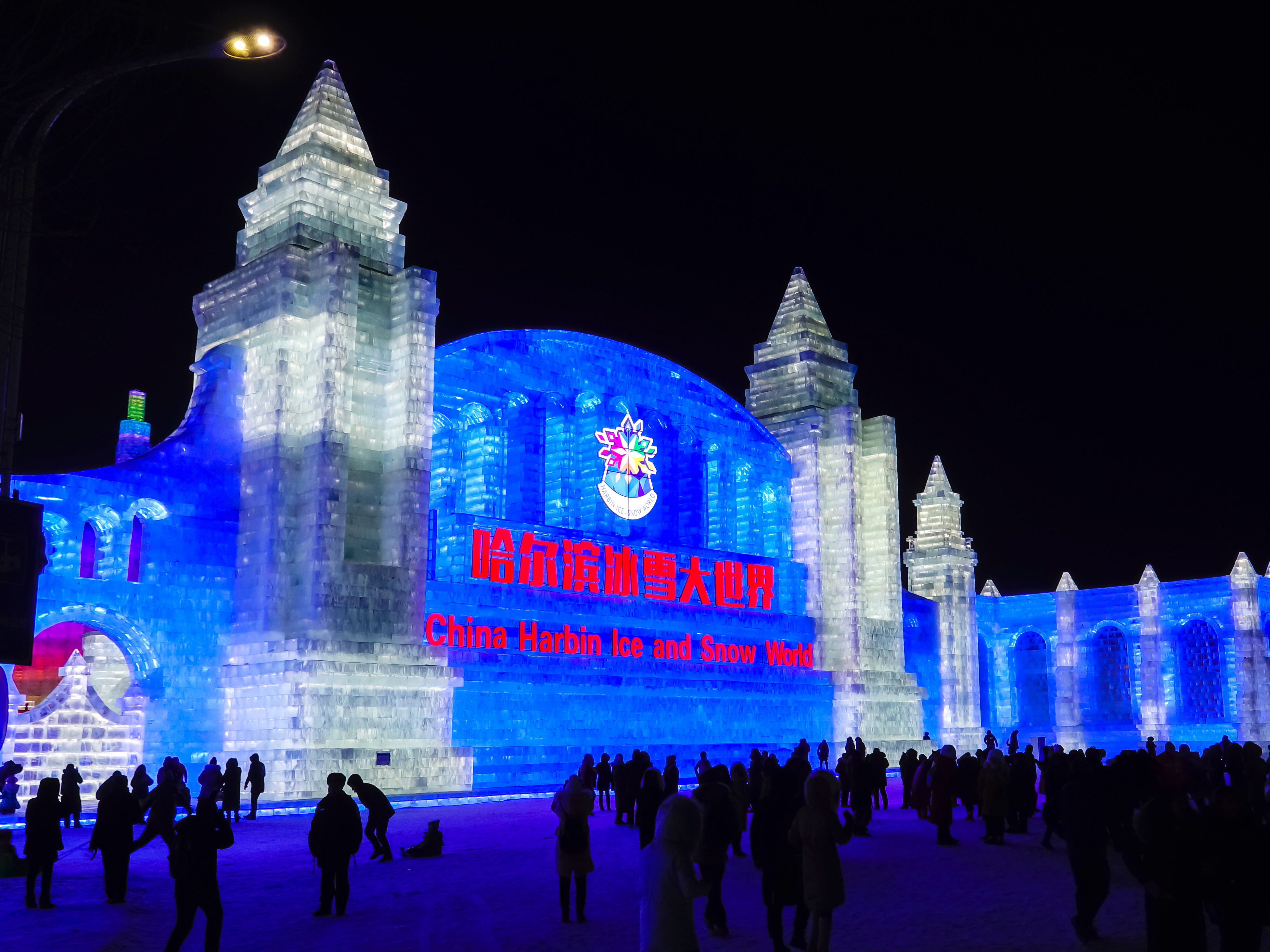- Harbin, China hosts an International Ice and Snow Festival each year that draws millions of visitors.
- The festival kicked off its 35th year on January 5.
- The festival’s winter attractions include life-size ice sculptures, ice replicas of the Colosseum and Milan Cathedral, and massive snowmen.
- There’s also an ice-swimming tournament in which swimmers brave the freezing waters of the Songhua river in sub-zero temperatures.
China’s Heilongjiang Province isn’t always a big destination for tourists, but when winter rolls around, the region rolls out the red carpet to millions of visitors from across the globe. The city of Harbin hosts one of the world’s largest winter celebrations, called the Harbin International Ice and Snow Festival, which features painstakingly crafted ice sculptures and gargantuan snow statues.
The festival, which includes four separate theme parks, kicked off its 35th year on January 5 and runs until the end of February. Last year’s attracted more than 18 million visitors, according to NBC News.
The festival’s colored lights make the ice creations look even more striking, and each year weddings also take place there in abundance.
For those unable to travel to Harbin this winter (presumably that’s most of us), take a look at these stunning images from the festival so far.
The 2019 Harbin International Ice and Snow Festival's opening ceremony kicked off with fireworks on January 5.

The festival's four theme parks are the Sun Island International Snow Sculpture Art Expo, Harbin Ice and Snow World, Harbin Wanda Ice Lantern World, and Zhaolin Park Ice Lantern Fair.
Lin Renlong, a 22-year-old visiting from Hebei with his girlfriend, told Reuters that it's like “Disneyland in winter.”
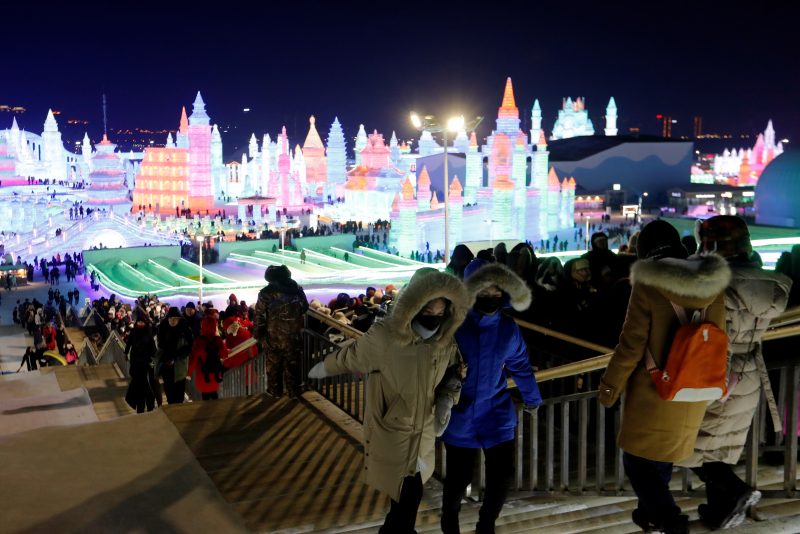
Despite the sub-zero temperatures, tourists like Renlong flock to Harbin from around the world and all over China.
Harbin Ice and Snow World — one of the four theme parks — grows larger every year; this year's covers more than 750,000 square meters, according to the festival website.

That's an area larger than California's Disneyland.
Visitors can enjoy Harbin's Ice and Snow World for about $48.
The event is one of the top ice and snow festivals in the world, along with Japan's Sapporo Snow Festival, Canada's Quebec City Winter Carnival, and Norway's Ski Festival.
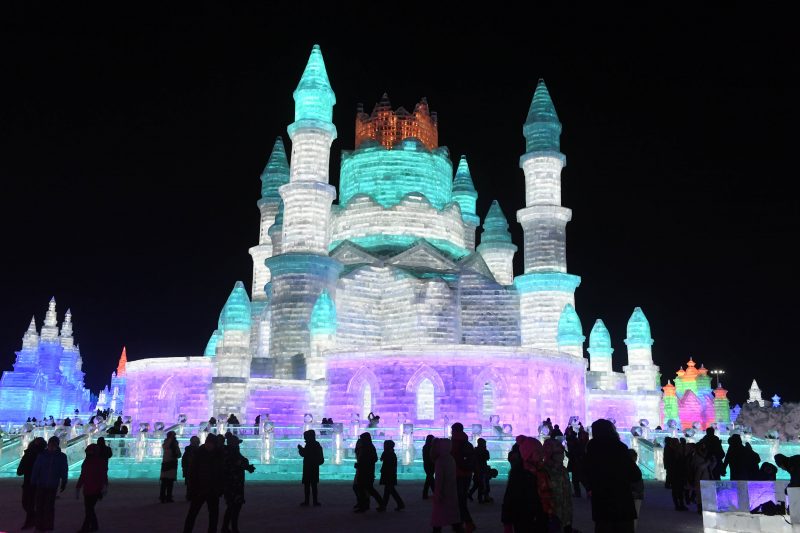
Harbin Ice and Snow World alone features 2,000 ice sculptures made from nearly 180,000 cubic meters (240,000 cubic yards) of ice.
The Ice and Snow World includes replicas of famous landmarks like the Colosseum and smaller, but nonetheless impressive, sculptures like this ice-block post office that actually sends letters.

There are also life-size replicas of the Acropolis in Athens and Beijing's Forbidden City.
After the sun goes down, the ice sculptures are awash in colored lights.

The green chutes shown in this image are ice slides that visitors can zoom down.
Some sculptures are affiliated with a brand, like this ice vending machine.
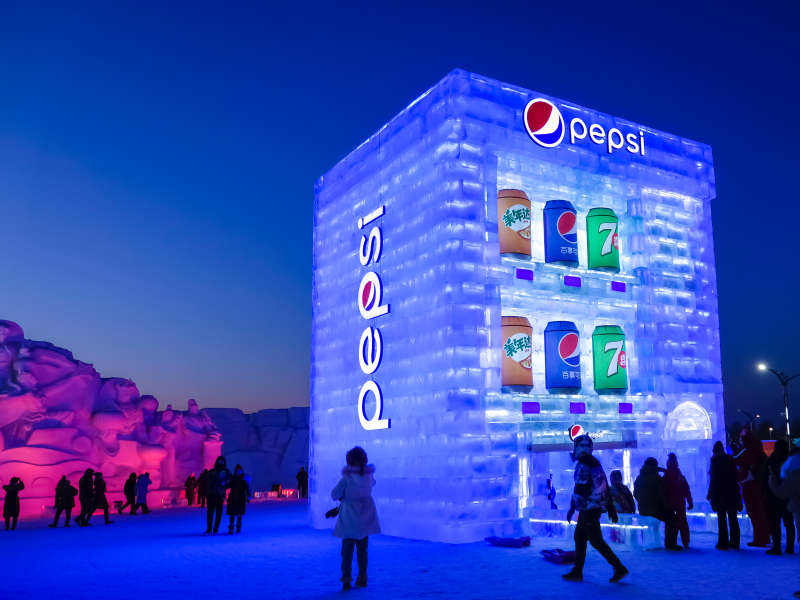
The festival also has a restaurant made entirely of ice, where visitors can enjoy drinks and eat hotpot.
Other sculptures are made by artists as part of ice-carving competitions.
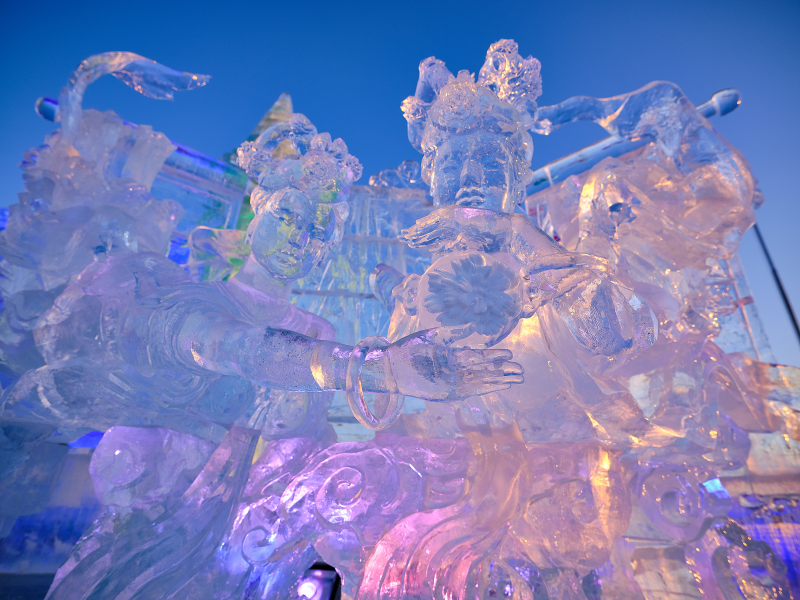
Thirty-four teams of artists from 16 countries participated in a three-day ice sculpting competition.
Visitors can also meander through the festival's display of 2,019 snowmen that sit on the frozen Songhua River.
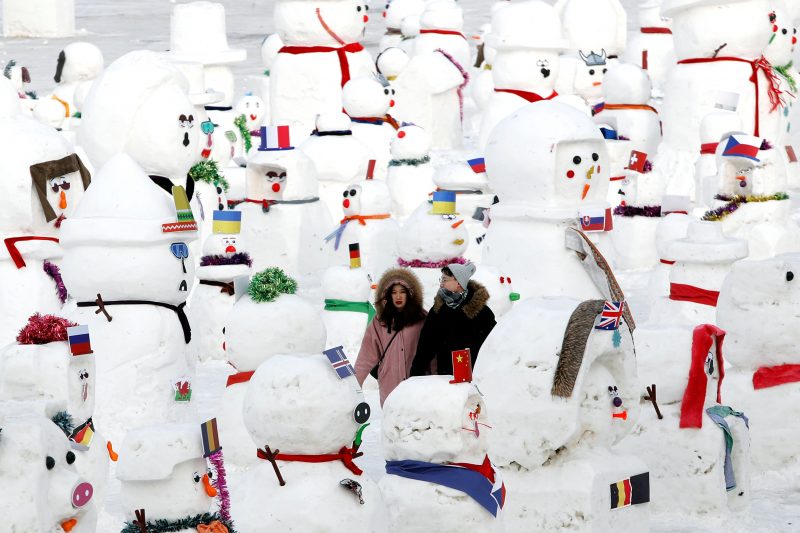
The snowmen sport flags or memorabilia from different nations.
Snow sculptures far bigger than any snowman can be found, too.
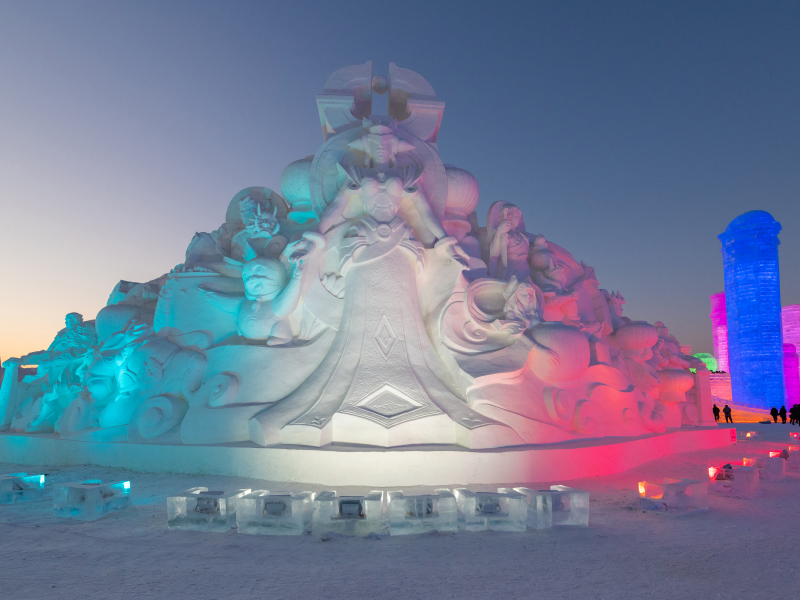
This sculpture features a character from the multiplayer online battle arena "Arena of Valor."
Visitors can even ride ice bikes near the snow sculpture exposition in the Harbin Sun Island theme park.

The main snow sculpture at Harbin Sun Island Park is 108 feet tall and more than 325 feet long.
Other activities at the festival include ice-sailing, ice hockey, ice football, speed skating, skiing, and fishing. There are less snowy options, too, like calligraphy displays, painting and photo exhibitions, and performances of folk music and dance.
The festival also has a tradition of mass wedding ceremonies.

A record-breaking 47 couples bundled up to participate in a mass wedding ceremony during the festival this year. Proceedings took place in an ice castle constructed for the occasion.
To help carve the festival's big snow sculptures, workers use cranes.
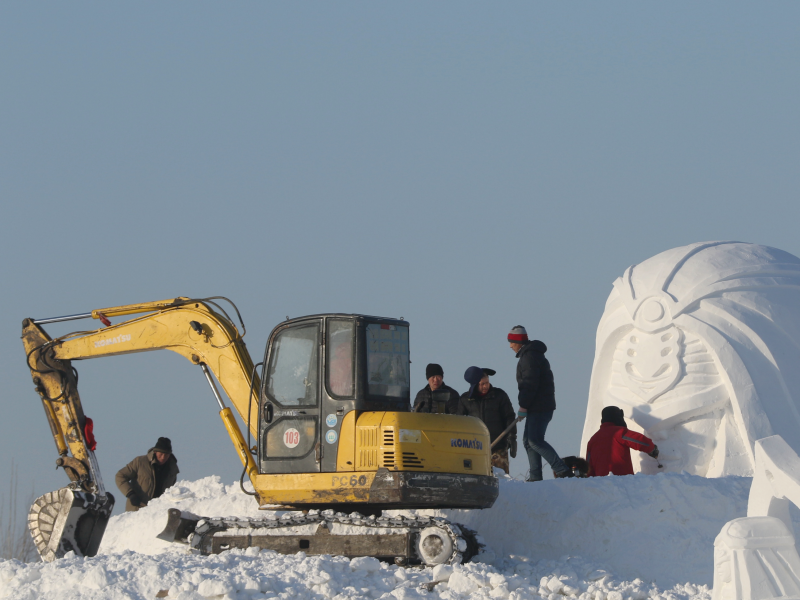
The festival's many sculptures are constructed over the course of several weeks.
Other cranes help workers construct tall ice sculptures out of ice blocks.
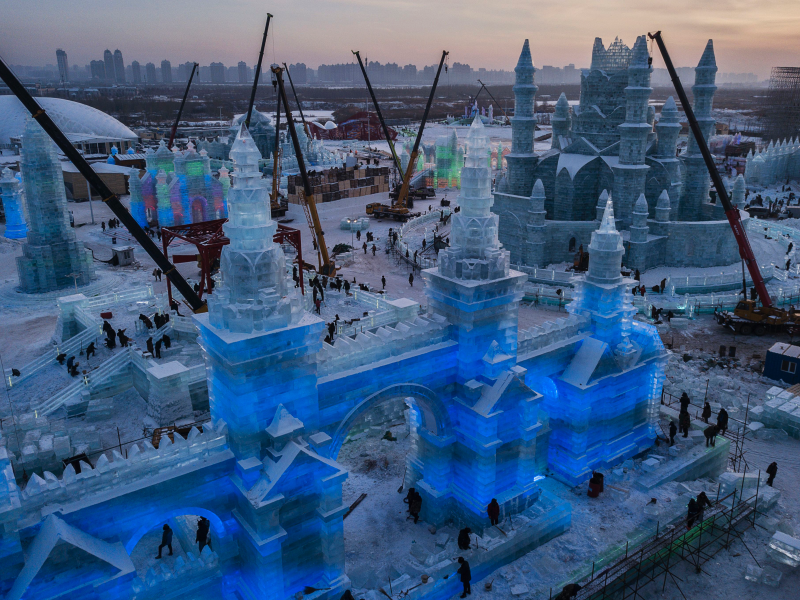
These sculptures wouldn't be possible without the raw materials, of course - most of the ice comes from the nearby Songhua River.
In the weeks leading up to the festival, workers use a machine to cut usable ice blocks from the frozen river.

They then use ice picks to pull those blocks out of the river.
The ice blocks are then dragged to the festival site.
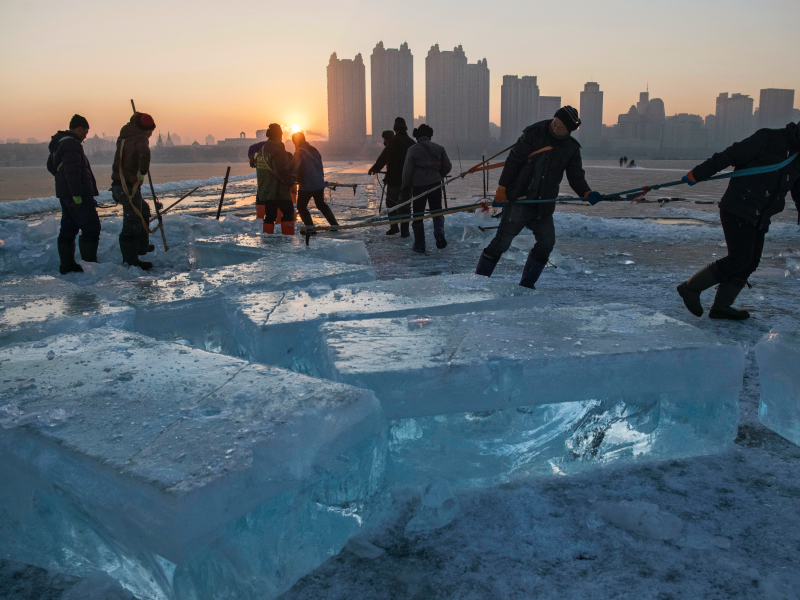
Workers earn about $35 a day transporting ice to the nearby Harbin Ice and Snow World. Each ice block can weigh up to 1,500 pounds. By the start of the festival, these workers have transported nearly 200,000 cubic metres of ice in total.
Workers use chainsaws to carve the ice into smooth building blocks for sculptures.

Most of the ice cutters are farmers from nearby villages. They start work before dawn in freezing cold temperatures, according to Getty photojournalist Kevin Frayer.
One of the festival's major events is a swimming competition. Even though outdoor temperatures can sometimes be -30 degrees Fahrenheit, people dive into the frigid waters of the Songhua River.
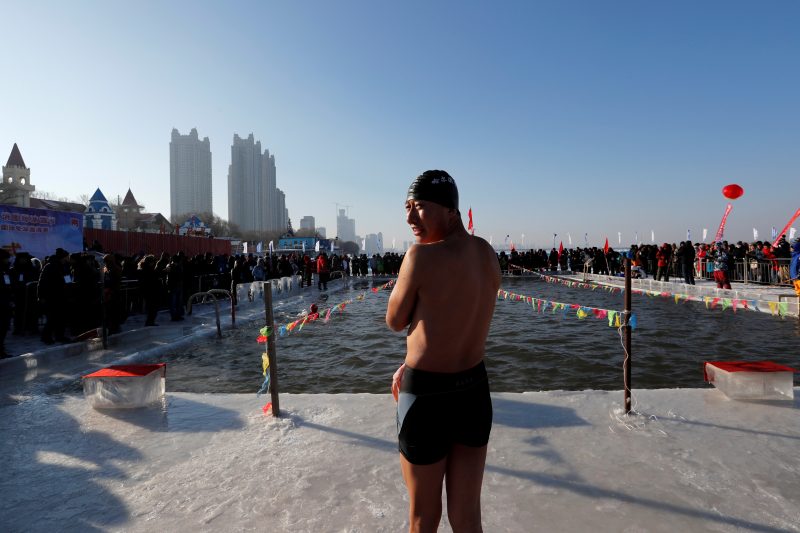
China's Heilongjiang Province borders Siberian Russia. But the freezing temperatures don't deter the hardcore swimmers who flock to a man-made pool carved into the Songhua river for an annual swimming contest.
Men and women of all ages took the polar bear plunge on January 5.
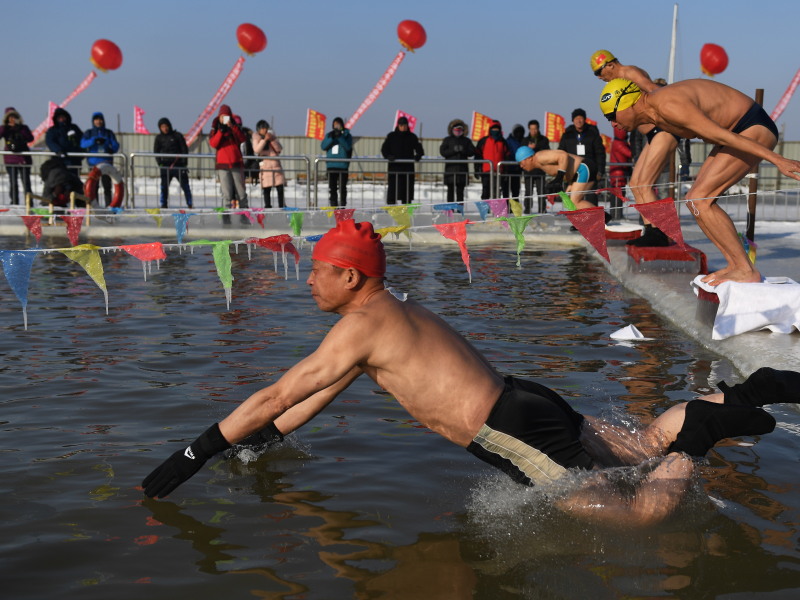
Hundreds of men and women in only swimwear, goggles, and swim caps took to the water, according to Reuters. The surrounding air temperature was just 5 degrees Fahrenheit.
Much like a typical swim race, competitors jumped from starting blocks and competed in breast stroke and back stroke.
Withstanding such frigid water takes practice. Swimmer Yu Hongtao told Reuters that he trained for months in advance of the festival's swimming tournament.
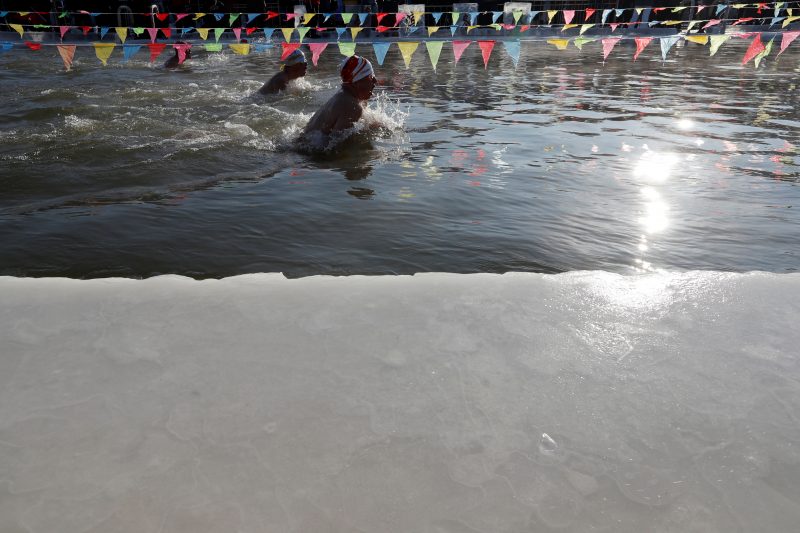
"You have to start swimming from autumn so that the body can conquer the sudden icy impact on one's cardio-vascular system," he said.
Winter swimming is something of a local sport in Harbin, and about 40% of those who do it are senior citizens, according to a Beijing Tourism Agency.

